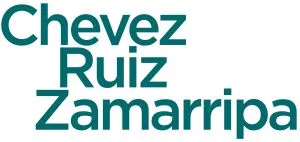As a follow-on from the energy reform, the infrastructure and energy sector has witnessed a new-found interest from participants who want to invest in publicly traded securities. Ricardo Rendón and Carlos Enrique Naime from law firm Chévez, Ruiz, Zamarripa look at the developments.
More than two years after the secondary package became law in Mexico, the energy sector has experienced a newfound interest from potential participants who are seeking to invest in publicly-traded securities. The vehicles indirectly allow them to hold interests in projects that generate qualified sources of income in a similar manner in which US master limited partnerships (MLPs) operate in foreign stock exchanges.
In this line of thought, in view of the increasing need of maintaining the competitiveness of state-owned companies and seeking to draw new sources of financing for infrastructure and energy-related projects, in the third quarter of 2015 the Mexican government announced the creation of a new security to be quoted in the stock markets in the form of certificates to be issued by a Mexican infrastructure and energy trust or Fideicomiso de Inversión en Energía e Infraestructura (FIBRA-E).
In broad terms, through a FIBRA-E, sponsors are able to securitise some of their mature assets related to oil and gas (excluding upstream activities), energy and/or infrastructure projects, while allowing investors to benefit from the returns generated by such projects.
In September 2015, the Mexican tax authorities published the first set of administrative rules containing the specific regulatory framework applicable to a FIBRA-E, to their certificate holders and to asset holders selling their projects. These rules entered into effect on October 1 2015.
Some months later, in April 2016, the aforementioned administrative rules were modified. According to the Mexican tax authorities, the modifications aimed to clarify some points of the originally issued rules, as well as setting forth a more appealing regime for all the participants in a FIBRA-E.
As of today, the rules that constitute the legal framework for a FIBRA-E and that will be observed by investors, sponsors and fund managers participating in this kind of vehicle are contained exclusively in administrative rules and not in the Mexican Income Tax Law.
The purpose of this article is to describe, in general terms, the most important features of the tax regime in force today.
MAIN FEATURES OF A FIBRA-E
Contribution of qualified assets
Several reorganisation rules have been put into place in order to allow sponsors to achieve tax-free reorganisations of all the qualified assets (land, fixed assets and/or deferred expenses destined to energy and infrastructure activities) of a project they want to securitise into a Mexican legal entity, which would act as the promoted entity.
Afterwards, the sponsor would transfer the shares issued by the promoted entity into a FIBRA-E. For Mexican tax purposes, the transfer of the shares is treated, prima facie, as an asset deal, which may create tax effects different to those arising from a plain sale of shares, since sellers have to consider the adjusted basis of the underlying assets. Moreover, in the event that the promoted entity has any outstanding debt, such an amount will be added to the sale price to determine the gain obtained from the transfer of the qualified assets.
It should be noted that since this regime intends to encourage investors to participate in mature stabilised projects, it is established that in general terms a qualifying promoted entity cannot have more than 25% of the average book value of non-monetary assets represented by new assets, as defined in the rules.
Sponsors are allowed to temporarily defer the gain obtained on the sale of the promoted entities in favor of a FIBRA-E, to the extent they solely receive certificates issued by the FIBRA-E as consideration. In this case, sponsors must consider the resulting gain as taxable income at a 15% rate each year, starting from the year when the shares are sold in favour of the FIBRA-E.
The outstanding deferred gain will be accelerated and considered as taxable income in advance in the year when any of the following assumptions takes place, whichever occurs first:
- The sponsor sells the certificates;
- The FIBRA-E sells the shares of the promoted entity; or
- The promoted entity sells the assets.
On the other hand, the acquiring FIBRA-E would consider a deferred deduction as part of its annual tax result, at a 15% rate (per year) on the "goodwill" obtained on the acquisition, which would be equal to the gain obtained by the sponsor in the sale. In case the sponsor obtains a loss from the transfer, the FIBRAE would recognise a deferred income in these same terms.
Once a FIBRA-E participates in a promoted entity, the latter would be considered as a tax transparent vehicle. This implies that the shareholders of the promoted entity would recognise the tax implications derived from the promoted entity's activity, while no further taxation would be levied at the level of the promoted entity.
The main advantage of the tax regime for the FIBRA-E structure is precisely that the promoted entities, as well as the FIBRA-E itself, are treated as transparent for tax purposes, achieving one level of tax at the level of the certificate holders.
Distributions by a promoted entity and a FIBRA-E
Annually, the promoted entity is required to distribute to its shareholders at least 95% of the tax result it determines. The sponsors who may act as co-investors must consider their portion of the distributed tax result as part of their taxable income, while the FIBRA-E must include its respective portion as part of the tax result that it is required to distribute to the certificate holders.
In general terms, the distributed tax result by a FIBRA-E in favour of the certificate holders is subject to a 30% income tax withholding, which should be creditable by the receiving certificate holders. Distributions of the tax result to Mexican pension funds would be exempt from this withholding. The FIBRA-E is also required to distribute annually to the certificate holders at least 95% of its tax result.
The trustee of the FIBRA-E is required to keep track of a paid-in-capital account (CUCA, as per its acronym in Spanish), without individualising it for each certificate holder. The balance of the CUCA account will be increased with the aggregate contributions made in cash or in kind to the FIBRA-E and will be subtracted with the capital reimbursements made by the FIBRA-E.
The distributions that a FIBRA-E made in excess of the amount of the tax result, would be considered as capital redemptions. Distributions arising from the CUCA account will not be treated as taxable income for the certificate holders. However, once the balance of the CUCA account is depleted, certificate holders must consider the exceeding distributions as taxable income, according to their corresponding tax regime.
Distributions arising from the CUCA account will reduce the adjusted basis that the certificate holders have in them, irrespective of the nominal value those certificates had when issued.
Repurchase of certificates
A FIBRA-E is allowed to repurchase the certificates it issued, as long as:
- The certificates are acquired with funds corresponding to the remaining 5% of the taxable income that the FIBRA-E was not required to distribute;
- The value of the investment maintained by the FIBRA-E in the repurchased certificates, in securities payable by the federal government or shares issued by mutual funds in debt instruments does not exceed 30% of the average annual value of the assets of the FIBRA-E; and
- The FIBRA-E complies with the tax rules applicable for Mexican legal entities for the repurchase of shares.
A FIBRA-E must consider the returns generated by the repurchased certificates during the holding period to determine the taxable income that will be distributed among the certificate holders.
Adjusted tax basis of the shares issued by the promoted entity
In cases where the FIBRA-E sells the shares issued by the promoted entities, the FIBRA-E must consider as the tax basis of those shares the price that was paid upon acquiring them, subtracted with the amount of the deferred expense ("goodwill") determined at the time of acquisition, which is or would have been deductible for the FIBRA-E.
Exempt sales
Foreign residents that sell certificates issued by a FIBRA-E will be exempt from Mexican income tax on the sale of those certificates, provided they are placed among the general investing public and sold through recognised markets.
This exemption also applies to Mexican resident individuals and Mexican pension funds, thus making this instrument very attractive from a tax perspective. However, this exemption does not apply to Mexican legal entities.
THE WAY AHEAD
At the time of writing, no FIBRA-E has yet been listed in the Mexican Stock Exchange. Prospective sponsors, investors and fund managers are looking into this towards making a placement in the market.
The issuance of the supplementary set of rules for a FIBRA-E in April 2016 made headway for encouraging private investment in the energy and infrastructure sectors aiming for the success of this new asset class. It is expected that infrastructure-related FIBRA-E's will be placed shortly in the Mexican Stock Exchange.
It is well known that the state-owned national oil company Petróleos Mexicanos (PEMEX) stands among the largest owners of qualified assets and that such an entity is in need of additional funding that may allow it to operate as a productive state company (empresa productiva del estado) in line with the goals of the energy reform. The FIBRA-E investment structure seems as a natural step to be taken by PEMEX in order to monetise its assets and obtain additional funding.
2017 TAX REFORM – PROPOSED BILL
On September 8 2016, the executive branch submitted a tax Bill to the Mexican Congress, which contains several amendments to federal laws already in force. If approved, the proposed amendments would apply in 2017. In the upcoming weeks, the proposed Bill for 2017 will be subject to a (presumably extensive) discussion process and approval by the Mexican Congress.
The proposed Bill contains important modifications for the participants in the energy sector and in particular, regarding tax matters in the Mexican Income Tax Law, as well as in the Hydrocarbons Revenue Law, which is a fundamental part of the secondary legislation of the constitutional reform that was passed on December 2013.
To provide legal certainty to participants in a FIBRA-E, it is desirable that its regulatory tax framework is incorporated into the Mexican Income Tax Law rather than into administrative rules, which can be subject to modifications by the tax authorities without going through any legislative process.
Notwithstanding the foregoing, the proposed Bill does not contain any modification to the tax regime applicable to participants in a FIBRA-E. Thus, all the rules that nowadays constitute the framework for the operation of this investment vehicle continue to be regulated solely through administrative rules.
It is necessary to stress that, after discussion by the Mexican Congress, the modifications contained in the proposed Bill may be subject to change.
The authors wish to thank Bernardo Iberri and Edgar García Wigueras, associates at Chévez, Ruiz, Zamarripa, for their collaboration in preparing this article.
Originally published by International Tax Review, October 2016.
The content of this article is intended to provide a general guide to the subject matter. Specialist advice should be sought about your specific circumstances.



